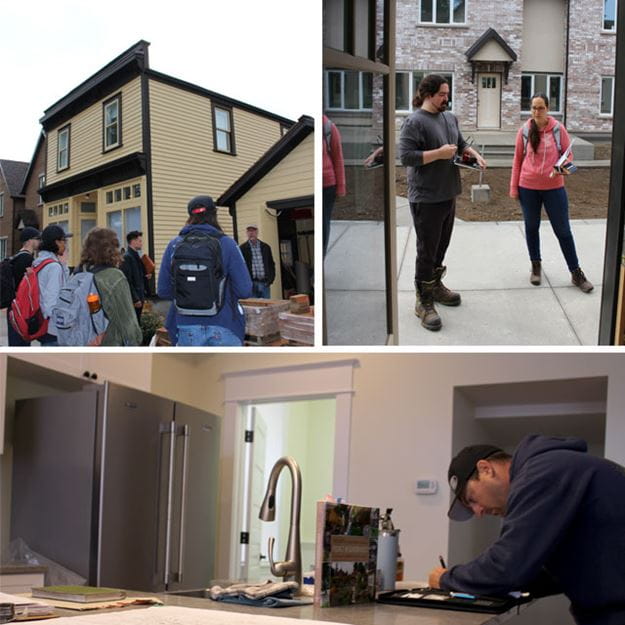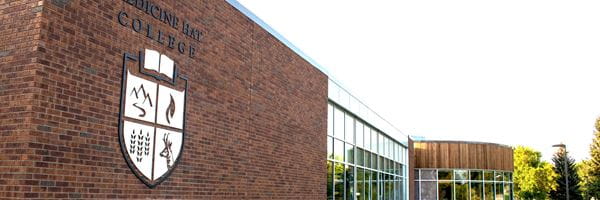BEET program blends variety, experience and flexibility

Students in MHC’s Built Environment Engineering Technology (BEET) program benefit from hands-on experiences throughout the year that take learning out of the classroom, onto the job site and into a virtual environment.
In the fall semester, second year students had the opportunity to work with local developer, Malcolm Sissons, and tour McKenzie Mews, an innovative housing project in Medicine Hat’s iconic Flats neighbourhood.
With a focus on social and environmental responsibility, the development centered around the historic McKenzie Sharland Grocery. Built in 1912, the structure and surrounding homes suffered considerable flood damage in 2013. This project not only restored an important piece of the community’s past, but brought it into the future with the inclusion of an accessible unit and renewable technologies.
For students, understanding the development process helped inform their fall semester project, which required them to produce a full set of architectural drawings up to and including the building permit stage.
“Being able to go to the site and talk to contractors was super helpful,” explains Stephanie Ouellette. “We learned so much about sustainable practices.”
The knowledge gained on that site visit was applied again this spring, as students prepared and presented their final capstone projects.
Tyler Goehring, a member of the Redcliff Fire Department, took the opportunity to re-imagine what a new fire station could look like in that community.
Building on his background in the construction industry, Goehring’s conceptual drawings focused on sustainable business practices. He incorporated the use of renewables and sustainable materials while considering water consumption, building orientation and landscaping options.
Goehring enjoyed the scope of BEET projects, but it was the variety of learning that first attracted him to the program.
“The BEET program offers so many disciplines - architectural, civil, and mechanical. I really enjoyed the creativity of the architectural stream.”
For Ouellette, it was that variety, plus the program’s flexible delivery that made it possible for her to work full time while preparing for a new career, that drew her to BEET.
“The program fit my lifestyle. The instructors worked hard to involve those who were learning remotely. I wouldn’t be able to be here today without that flexibility.”
Click here to learn more about the BEET program.
In photos:
Top: BEET students tour McKenzie Mews
Bottom: Stephanie Ouellette and Tyler Goehring present their final capstone projects.
